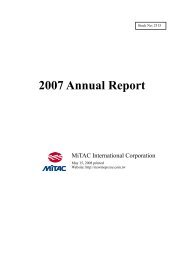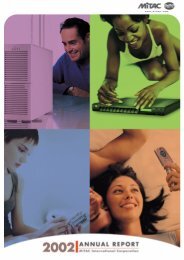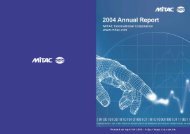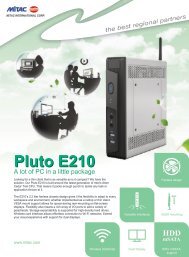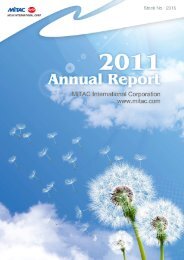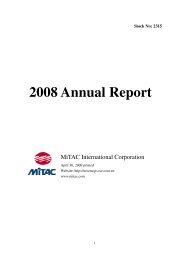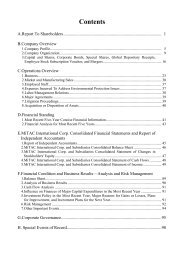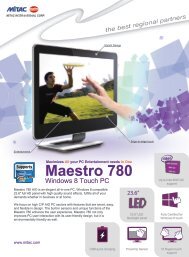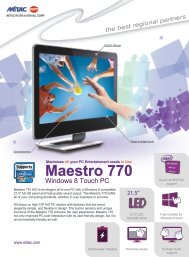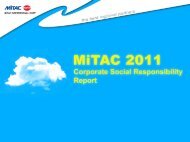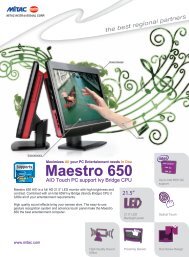Letter To Shareholders - Mitac
Letter To Shareholders - Mitac
Letter To Shareholders - Mitac
You also want an ePaper? Increase the reach of your titles
YUMPU automatically turns print PDFs into web optimized ePapers that Google loves.
4) Classification of current and non-current items<br />
A. Assets that meet one of the following criteria are classified as current assets;<br />
otherwise they are classified as non-current assets:<br />
a) Assets arising from operating activities that are expected to be realized or<br />
consumed, or are intended to be sold within the normal operating cycle;<br />
b) Assets held mainly for trading purposes;<br />
c) Assets that are expected to be realized within twelve months from the balance<br />
sheet date;<br />
d) Cash and cash equivalents, excluding restricted cash and cash equivalents and<br />
those that are to be exchanged or used to pay off liabilities more than twelve<br />
months after the balance sheet date.<br />
B. Liabilities that meet one of the following criteria are classified as current<br />
liabilities; otherwise they are classified as non-current liabilities:<br />
a) Liabilities arising from operating activities that are expected to be paid off<br />
within the normal operating cycle;<br />
b) Liabilities arising mainly from trading activities;<br />
c) Liabilities that are to be paid off within twelve months from the balance sheet<br />
date;<br />
d) Liabilities for which the repayment date cannot be extended unconditionally<br />
to more than twelve months after the balance sheet date.<br />
5) Cash equivalents<br />
Cash equivalents refer to highly-liquid, short-term investments with the following<br />
characteristics:<br />
A. Investments that can be readily converted into known amount of cash;<br />
B. Investments of which the values are not significantly affected by the<br />
fluctuations in interest rates.<br />
The preparation of cash flow statement is based on cash equivalents.<br />
6) Financial assets and financial liabilities at fair value through profit or loss<br />
A. Financial assets and financial liabilities at fair value through profit or loss are<br />
recognized and derecognized using trade date accounting and are recognized<br />
initially at fair value.<br />
B. These financial instruments are subsequently remeasured and stated at fair<br />
value, and the gain or loss is recognized in profit or loss. The fair value of<br />
listed stocks, OTC stocks and closed-end mutual funds is based on latest<br />
quoted fair prices of the accounting period. The fair value of open-end and<br />
balanced mutual funds is based on the net asset value at the balance sheet date.<br />
~101~



